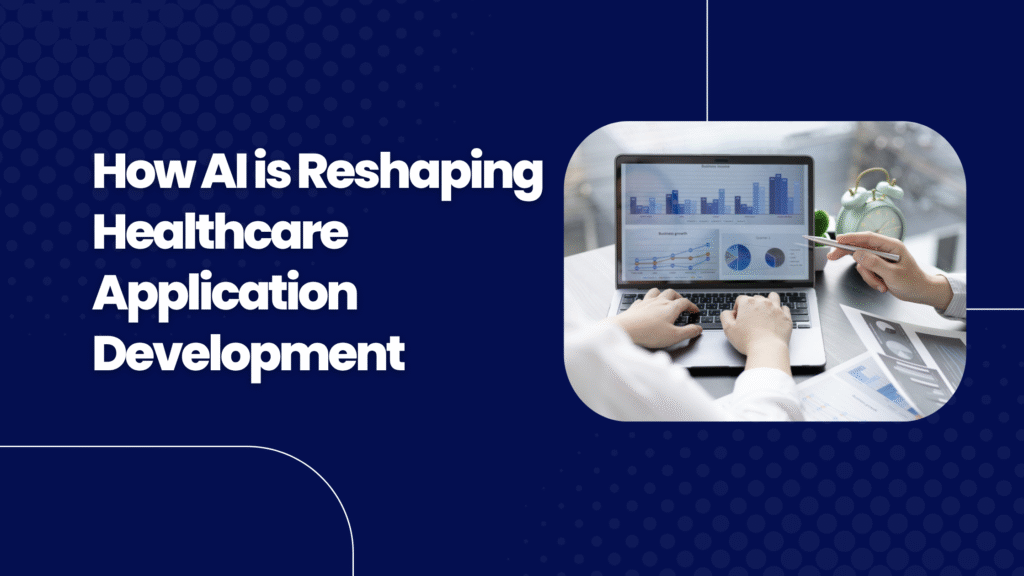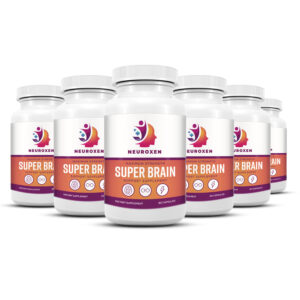
There’s a shift happening in healthcare—subtle but seismic. It’s not just about modern hospitals or paperless clinics. This time, it’s deeper. Quietly, intelligently, and persistently, AI is reengineering the very DNA of healthcare applications.
We’re not talking about pie-in-the-sky promises. We’re talking about real, measurable impact on how healthcare software is designed, developed, deployed, and experienced. If healthcare was once bogged down by clunky systems and bureaucratic complexity, AI is helping to turn that narrative on its head—system by system, pixel by pixel.
This blog explores how artificial intelligence is becoming the architect behind a new wave of healthcare application development—building systems that are faster, sharper, and more aligned with human need.
The Legacy Problem: Healthcare Software Wasn’t Built for Today
Let’s rewind for a second.
Most healthcare software was designed in a different era. Think clunky interfaces, hardcoded rules, siloed data, and workflows that required more patience than logic. It got the job done—but just barely. And it left a trail of problems:
-
Slow processing times
-
Poor interoperability
-
Minimal user engagement
-
Data overload without insights
These weren’t just inconvenient. They were dangerous in high-pressure, life-and-death settings. The truth? Healthcare needed more than a digital upgrade. It needed a reinvention. And that’s where AI stepped in—not just as a tool, but as a mindset.
Not a Buzzword Anymore: Why AI Now Matters in Healthcare Dev
Artificial Intelligence, long hyped, is finally practical—and deeply transformative in healthcare. This isn’t about machines replacing doctors. It’s about giving doctors, nurses, admin staff, and patients tools that think with them, not just for them.
In healthcare application development, AI is now core to:
-
Designing adaptive user experiences
-
Streamlining backend logic and decision-making
-
Processing massive datasets in real-time
-
Delivering predictive insights for care teams
The result? Apps that don’t just record data—they understand it. Systems that don’t just store histories—they anticipate futures. And workflows that flex and evolve based on real-time behavior, rather than rigid programming.
This is where traditional software meets intelligence.
Building Smarter Systems: What AI Really Does in Development
Let’s get practical. What exactly is AI doing inside today’s healthcare application development cycle?
1. Intelligent Data Processing
Healthcare data is messy—unstructured notes, sensor logs, imaging data, genetic profiles. AI makes sense of it. Natural Language Processing (NLP) converts physician notes into structured entries. Machine Learning algorithms flag patterns buried in years of clinical history. Suddenly, data isn’t just archived—it’s actionable.
2. Predictive Modeling
AI systems can now forecast hospital admission rates, patient deterioration, or even no-shows based on past behavior. These predictions feed directly into app design—creating alerts, triggering workflows, or guiding resources—all within the app itself.
3. Personalized User Interfaces
Applications no longer need to be “one size fits all.” AI can personalize the interface based on user role, past behavior, and real-time needs. A nurse sees a different dashboard than a cardiologist. A diabetic patient gets customized medication reminders based on their habits.
4. Conversational Interfaces
AI-powered chatbots are transforming how users interact with healthcare apps. From symptom checkers to mental health assistants, these bots aren’t gimmicks. They’re front-line responders—reducing call volumes, improving access, and enhancing engagement.
5. Automated Compliance
Regulatory compliance is a beast in healthcare. But AI helps. By scanning forms, documentation, and workflows, AI can spot gaps in HIPAA or GDPR adherence and flag risks in real time.
AI isn’t just playing assistant. In many cases, it’s becoming the co-developer—automating, refining, and evolving apps to be smarter out of the gate.
Designing for Outcomes: AI’s Role in UX and UI
Here’s something the healthcare industry learned the hard way: Bad UX kills adoption. You can build the most powerful software, but if the user interface is confusing or clunky, doctors won’t use it, patients will avoid it, and outcomes will suffer.
This is where AI is quietly becoming a UX game-changer.
Behavior-driven design is now possible. By analyzing how users interact with the application—where they click, hesitate, drop off—AI can help developers redesign workflows in real time. No more guesswork. Just data-backed improvements.
Voice recognition and NLP are also key. Instead of typing everything, physicians can dictate notes. The app transcribes, organizes, and even tags them intelligently. Less keyboard. More care.
Accessibility is another area where AI steps in. Applications can now adjust content for users with disabilities, learning preferences, or language differences. That’s not just inclusive design—it’s smart design.
When AI is integrated into the design layer, apps don’t just look better—they work better.
Accelerating Development Cycles with AI
Building healthcare applications isn’t like launching a food delivery app. Compliance, testing, integrations, and validation all slow things down. But AI is helping teams move faster—without compromising quality.
AI-powered testing now automates regression tests, performance checks, and security audits. Machine Learning models can predict bugs based on historical issues—highlighting risky code areas before they break.
Code generation tools—guided by AI—can speed up UI prototyping and backend setup. Developers can focus on logic and experience rather than rewriting boilerplate code.
Continuous feedback loops also benefit from AI. Post-launch data feeds into learning models that flag what features are working, what needs improvement, and what users are ignoring. Iteration becomes intelligent.
This isn’t just about speed—it’s about reducing waste and building with precision.
Real-World Applications: AI Already in Play
Let’s move from theory to deployment. AI is already embedded in some of the most exciting healthcare apps in use today.
-
Babylon Health uses AI to triage patient symptoms before doctor visits, increasing efficiency in primary care.
-
Buoy Health offers intelligent self-diagnosis and connects users to care options within minutes.
-
Aidoc helps radiologists by automatically flagging urgent findings on CT scans.
-
Tempus leverages AI to analyze clinical and molecular data for personalized cancer treatment.
Even hospitals are developing internal applications powered by AI—like smart OR scheduling tools, resource management systems, and custom EHR modules. The direction is clear: healthcare apps are becoming diagnostic and operational allies, not just digital notebooks.
Security and Ethics: Not Afterthoughts
You can’t talk about AI in healthcare without addressing the elephant in the server room—data privacy and ethical boundaries.
AI systems need enormous volumes of data. But in healthcare, that data is sacred. Breaches, misuse, or biased outcomes aren’t just inconvenient—they’re catastrophic.
That’s why ethical AI development has become a core pillar. Here’s how responsible developers are tackling it:
-
Data anonymization to protect identities while training models
-
Bias audits to ensure algorithms perform equitably across populations
-
Explainability features so clinicians can understand and trust AI decisions
-
Granular access controls to safeguard sensitive information
Trust is non-negotiable. The best healthcare software doesn’t just comply—it demonstrates transparency at every level of interaction.
The Developer’s Mindset: AI as a Partner, Not a Shortcut
Let’s clear up a misconception: AI doesn’t replace developers. It amplifies them.
Successful healthcare application development today requires collaboration between domain experts and AI systems. Developers are no longer just coders—they’re strategists, problem-solvers, and product thinkers. They work alongside data scientists, clinicians, and AI tools to build applications that are technically solid and clinically meaningful.
This shift is cultural as much as it is technical. Teams must be agile, curious, and open to continuous learning. Because in this new world, the goal isn’t just to ship software—it’s to build applications that adapt, learn, and evolve.
The Global Landscape: Diverse Problems, AI-Led Solutions
AI’s impact on healthcare development isn’t limited to high-tech hubs. Around the world, developers are using AI to solve local healthcare challenges.
-
In Africa, AI-powered mobile apps are being used to identify malaria in rural regions using phone cameras.
-
In Southeast Asia, chatbot-based mental health apps are offering anonymous support in stigmatized environments.
-
In Europe, AI is enabling cross-border EHR access while respecting GDPR frameworks.
-
In Latin America, clinics are using AI for low-cost diagnostics where lab access is scarce.
Each of these solutions is born from local needs—but powered by globally advancing AI tools. The opportunity for developers worldwide? Build healthcare apps not just for scale, but for specificity.
What This Means for Healthcare Providers
If you’re a healthcare provider reading this and wondering how to ride the AI wave—here’s the takeaway: Don’t build yesterday’s software tomorrow.
Modern healthcare applications need to:
-
Learn from real-world data
-
Guide clinical decisions
-
Optimize workflows automatically
-
Engage patients with intelligence
-
Scale securely across devices and regions
That’s not optional anymore. It’s expected.
Partnering with the right development team—those who understand both AI and the realities of healthcare—is your first step toward meaningful innovation.
Conclusion: Smarter Applications for a Healthier Future
The future of healthcare isn’t just digital—it’s intelligent. AI is reshaping application development from the ground up, creating systems that aren’t just functional, but deeply responsive to the needs of patients, providers, and health systems.
From real-time diagnostics to predictive care, from chatbot triage to backend optimization, AI is changing how we build, think about, and trust healthcare software.
And for healthcare providers, the time to move is now. Partnering with a custom hospital software development company can unlock the full potential of AI in your next application—helping you build smarter, faster, and with purpose.
Because healthcare apps should do more than manage care. They should amplify it.




